2015 Nepal earthquake: 10 years on
A decade later, your support has made a huge difference.

Durbar Square after the earthquake. Photo: Nirjal Stha, Wikimedia Commons.
What was the impact of the 2015 Nepal earthquake?
On April 25, 2015, Nepal was devastated by a 7.8 magnitude earthquake. Thousands were killed and injured, and millions were made homeless. Homes and buildings collapsed, including places that are important to Nepal’s history, heritage and culture. Vital infrastructure was severely impacted.
The humanitarian toll of the 2015 Nepal earthquake
8,857
lives lost.
22,304
people injured.
3.5 million
people left homeless.
2.6 million
people displaced within Nepal.
But this is not just a story of devastation and loss. This a story about the long-term impact of your support, and how even a one-off donation can still make an impact a decade later.
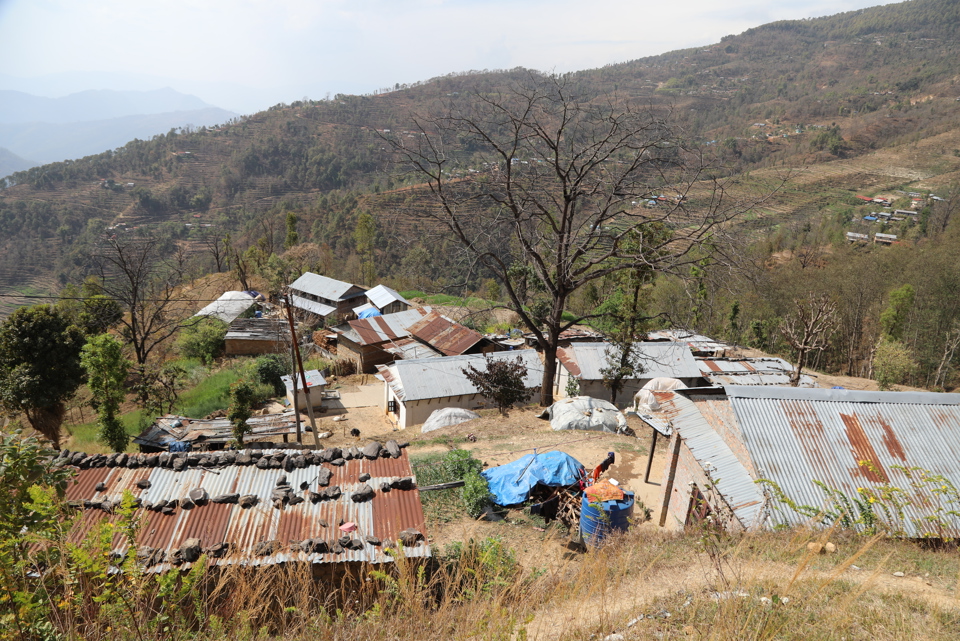
Houses in a village in Nepal. All houses are Caritas beneficiaries. Photo: Madan Bhusal/Caritas Nepal.
How did Caritas Australia respond to the 2015 Nepal earthquake?
Caritas Australia, alongside the global Caritas network, responded immediately—providing life-saving aid to 352,000 people with emergency shelter, clean water, and sanitation support.
In the years following, your support has helped communities in Nepal rebuild, recover, and prepare for future disasters. Together, we’ve achieved:
16,875 students
supported in education.
15,584 people
received protection and psychosocial support.
29,456 farmers
provided with livelihood inputs.
6,864 people
trained in disaster risk reduction.
19,264 people
received livelihood training.
21,445 people
benefitted from 63 water schemes.
10,710 people
were reached by water, sanitation and hygeine programs.
2,448 masons
trained to build safer structures.
1,062 houses
were reconstructed.
1,026 students
were helped through the rebuilding of 7 schools.
8,000 people
benefitted from 2 health posts.
1,830 farming families
benefitted from the construction of 39 irrigation canals.
Stories from the 2015 Nepal earthquake
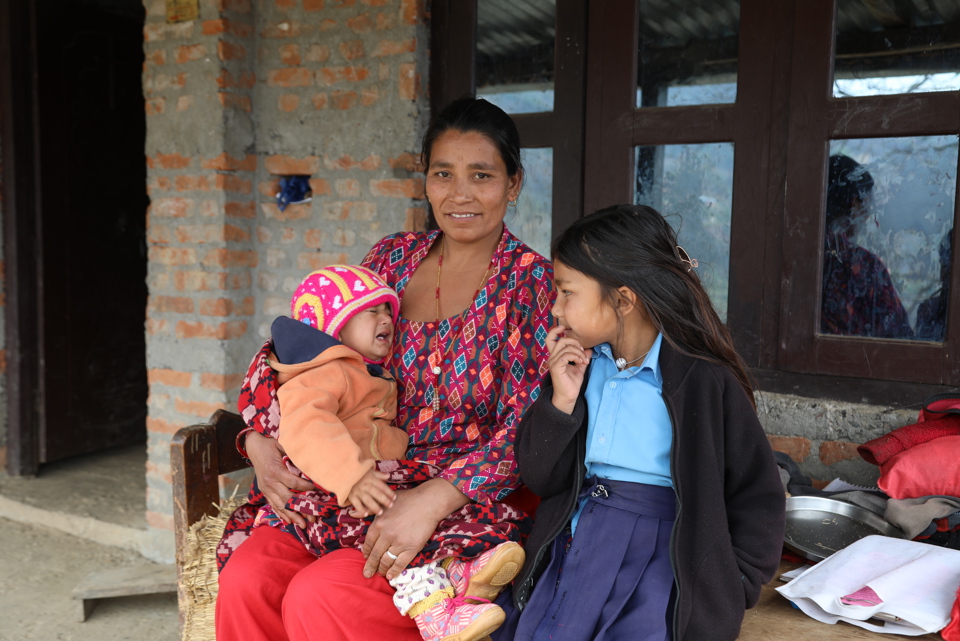
Suntali and her daughters. Photo: Photo: Madan Bhusal/Caritas Nepal.
Suntali's Story
When the earthquake struck, Suntali, a farmer and mother of two, clung desperately to her children as their home collapsed around them. In an instant, everything they had built was reduced to rubble.
Describing the harrowing experience, Suntali shared, “The aftermath was a nightmare.” The once-vibrant village, filled with the everyday sounds of life, was now drowned in cries for help. With their shelter gone, her family, like many others, was left without food, clean water, or security.
Each night under a makeshift tent, Suntali struggled to comfort her frightened daughters, uncertain of what the future held.
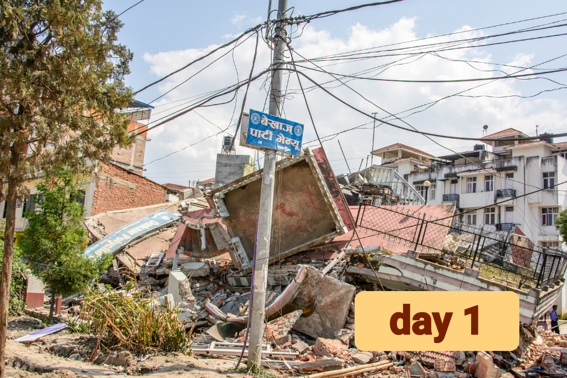
Collapsed a building from 2015 Nepal earthquake. Photo: Kabir Uddin.
Immediate Aftermath
Caritas Nepal arrived with emergency relief including food and shelter materials. She remembers the moment she received her first packed of aid.
“For the first time since the earthquake, I felt a ray of hope.”
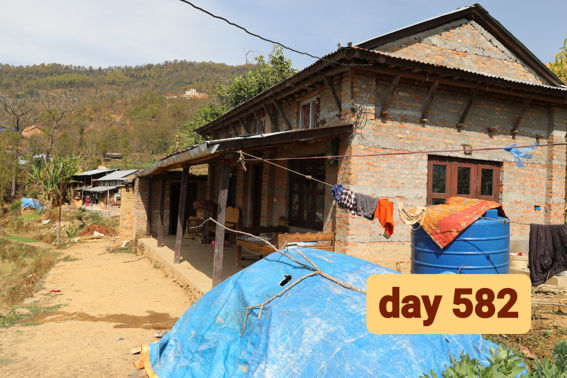
Rebuilt home in Nepal. Photo: Madan Bhusal/Caritas Nepal.
Medium-term response
Suntali’s family was among the beneficiaries selected for Caritas Nepal’s housing reconstruction program. With guidance, financial aid, and hands-on assistance, the ruins of her past gave way to the foundation of a new beginning. She vividly recalls the tears streaming down her face as she watched her children sleep peacefully under a secure roof once more.

Suntali and her daughters. Photo: Madan Bhusal/Caritas Nepal.
Long-term impact
With their home restored, Suntali and her husband could refocus on rebuilding their livelihood. Farming activities resumed, their children returned to school, and the village gradually regained its spirit. The reconstruction of community buildings played a crucial role in restoring a sense of unity and resilience among the villagers.
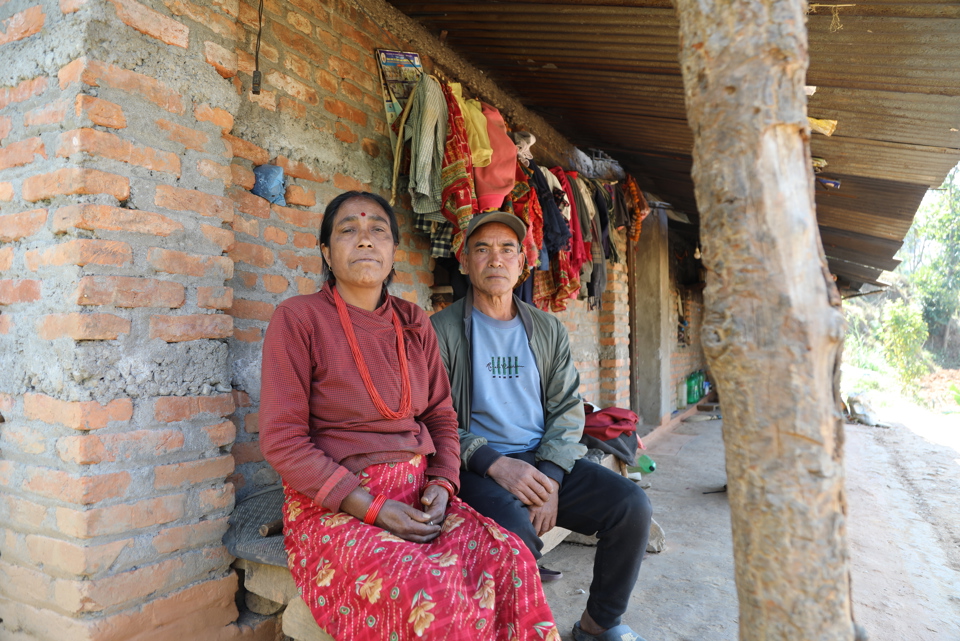
Netra and Hari Maya. Photo: Madan Bhusal/Caritas Nepal.
Netra's story
Netra, a 58-year-old farmer from a quiet rural village, never imagined that his simple life with his wife, Hari Maya, 54, would change overnight. When the earthquake struck, Hari Maya was in the fields, but Netra was inside their home. In just moments, the walls crumbled, and the house they had spent years maintaining was reduced to rubble.
Left without shelter, the couple had no choice but to take refuge in a makeshift tent, enduring cold nights filled with uncertainty and fear.
The disaster not only destroyed their home but also damaged their farmland, threatening their only source of food and income. The weight of their struggles was overwhelming, and with no immediate family to turn to, they felt truly alone.
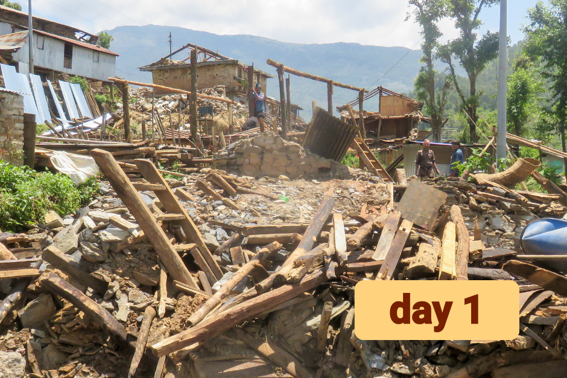
Destroyed village from 2015 Nepal earthquake. Photo: Weaver1234.
Immediate Aftermath
Humanitarian organizations, including Caritas Nepal, stepped in, bringing food, blankets, and clothing—small comforts that made a world of difference in their darkest days.
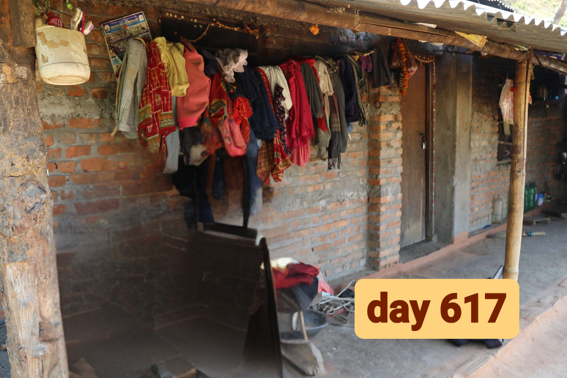
Netra B.K.'s rebuilt home. Photo: Madan Bhusal/Caritas Nepal.
Medium-term response
Like Suntali, Netra and Hari Maya were selected for the housing reconstruction program. They were also given agricultural training and new farming tools, allowing them to improve their crops and regain their independence.
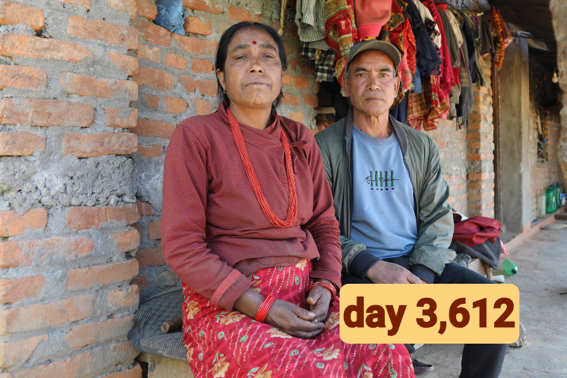
Netra B.K. and Hari Maya. Photo: Madan Bhusal/Caritas Nepal.
Long-term impact
Slowly, their land started to thrive again, and with it, their hope for the future. Today, the couple lives in their newly built home, tending to their fields with a renewed sense of purpose. The challenges of life remain, but they have found strength in the kindness of strangers who became their lifeline.
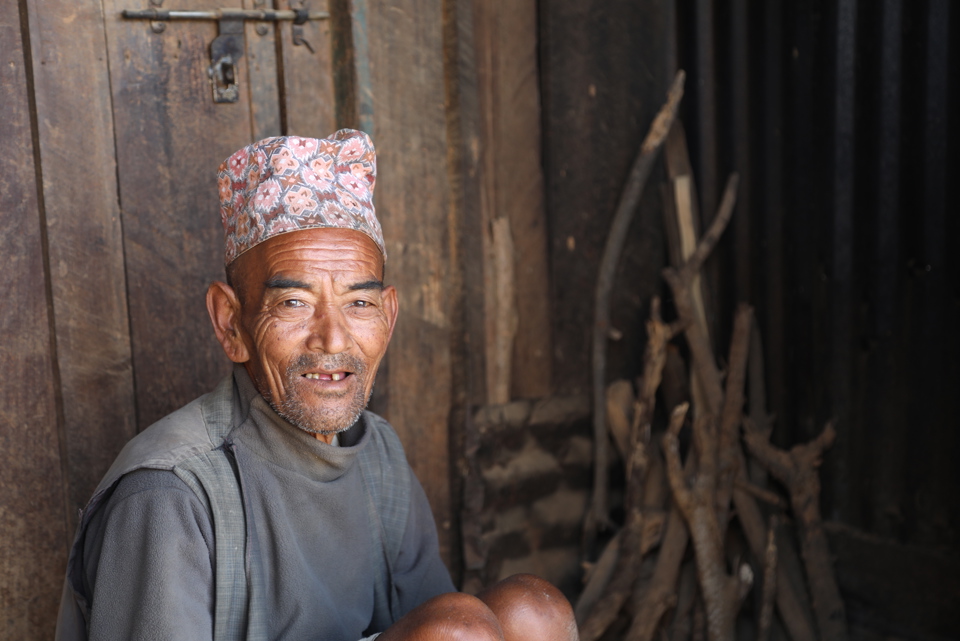
Bhim. Photo: Madan Bhusal/Caritas Nepal.
Bhim’s Story
Bhim, a 66-year-old resident of Thokarpa, Jamune, had lived a life of solitude long before disaster struck. He had weak hearing capacity and lacked support and care from his family.
The earthquake destroyed his home, and his only source of income, his cow, was left without shelter or adequate food. The emotional toll of his isolation deepened as he struggled to survive with no immediate family to turn to.
Reflecting on his hardships, he expressed his immense despair, knowing that his only shelter was gone and his means of sustenance severely affected. The earthquake didn’t just take away his home; it heightened his loneliness, leaving him in a state of helplessness and uncertainty.
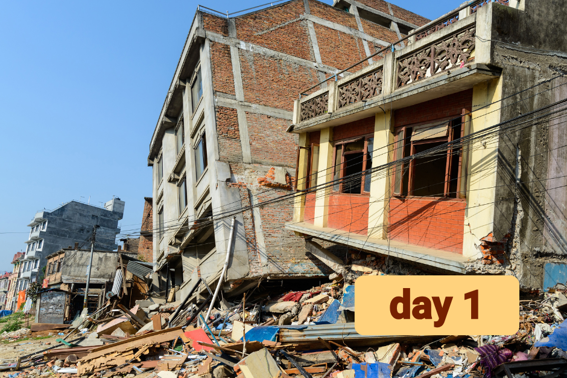
Aftermath of Nepal earthquake. Photo: Thomas Dutour.
Immediate Aftermath
Relief materials became his only source of comfort. Volunteers and organizations stepped in, offering food, blankets, and clothing to help him through the crisis. Upon receiving these essentials, he was deeply moved and emotionally overwhelmed.
“For the first time in my life, I felt that someone truly cared for me.”
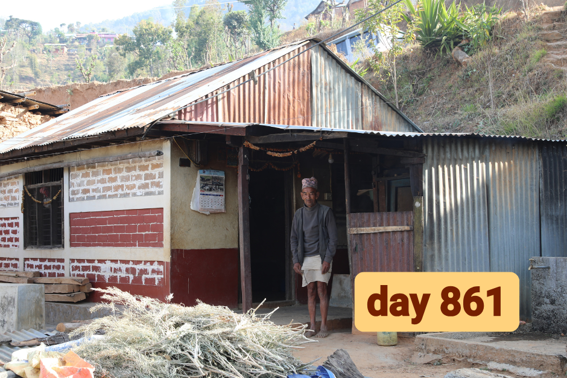
Bhim's rebuilt home. Photo: Madan Bhusal/Caritas Nepal.
Medium-term response
Bhim Bahadur was also selected for the housing reconstruction program. The new disaster-resilient house not only provided physical security but also restored his sense of dignity and belonging. For the first time in years, he felt genuine warmth and compassion from strangers who extended their support without expecting anything in return.
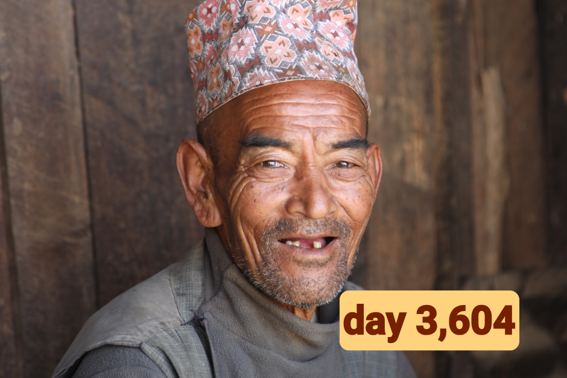
Bhim. Photo: Madan Bhusal/Caritas Nepal.
Long-term impact
Today, he continues to live in his newly built house, tending to his cow and sustaining his livelihood. His days are spent caring for his livestock, taking moments of rest in the comfort of a secure home that once seemed unattainable. Though still living alone, he no longer feels abandoned by the world. The support he received not only rebuilt his house but also reignited his faith in humanity.
Ten years on, your support has made a huge difference.
Caritas Nepal have visited beneficiaries to see just how far they have come since devastation.
The next disaster could strike at any time—will you help us be ready?
Emergencies happen without warning. When disaster strikes, the ability to respond quickly and effectively is critical to saving lives. That’s why Caritas Australia’s Emergency Response Appeal exists—to ensure that when the next disaster occurs, we can act immediately to help those in urgent need.

Suntali and her daughters. Photo: Photo: Madan Bhusal/Caritas Nepal.
The funds you donate to this appeal go to Caritas Australia’s Emergency Response Appeal and will be used to provide humanitarian assistance to communities affected by crisis. Should circumstances prevent us from delivering aid to this emergency, or if excess funds remain after the crisis, donations will be directed to other emergencies where Caritas has humanitarian operations.












